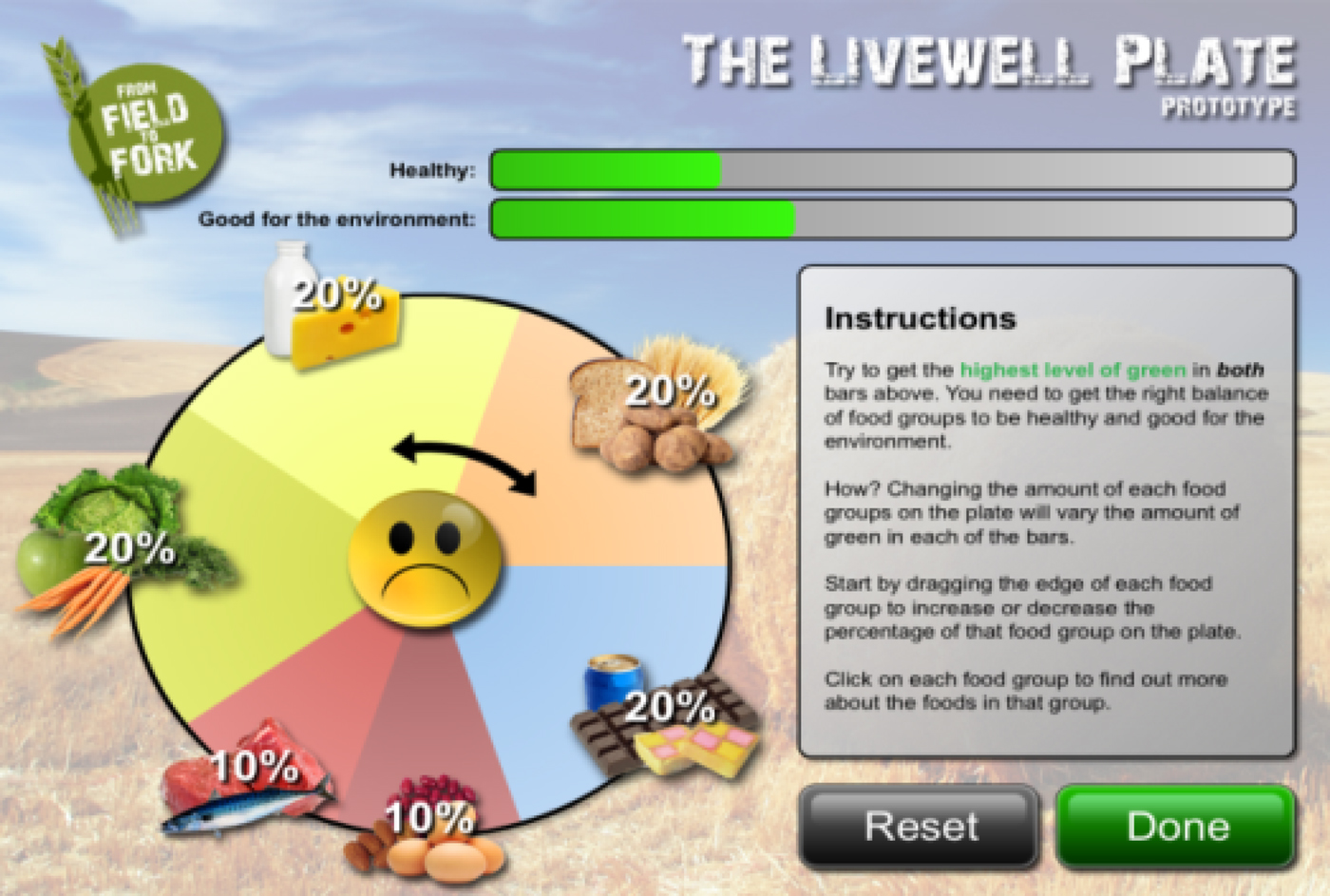Addressing sustainability of the food system requires balancing of health, environmental, social and economic aspects of food choices. While we have shown that it is possible to create a realistic diet that can achieve both dietary requirements for health and have a lower environmental impact in terms of reducing greenhouse gas emissions (GHGE)(Reference Macdiarmid1), it is difficult to communicate to the public how to balance these concerns in everyday food choices.
The aim of this study was to develop and test an educational tool, in the form of an interactive computer application (app), to show the combinations of food choices that can achieve healthy and environmentally sustainable diets. The app was developed by the Rowett Institute of Nutrition and Health in collaboration with the BBSRC Global Food Security programme (www.foodsecurity.ac.uk) and Searchpath application developers (www.searchpath.co.uk). We built the Livewell plate app on the basic principles of the Eatwell plate, which illustrates the proportions of five food groups that make up a healthy diet(2). The Livewell plate app (Fig. 1) incorporates the environmental impact of food choices (e.g. GHGE), using six food groups rather than the five group in the Eatwell plate; ‘meat, fish, eggs beans’ group is split into ‘meat and fish’ and ‘eggs and beans’ because of the higher GHGE associated with production of the former group. Users change the proportions of the food groups which alters the healthiness score and the GHGE score of the whole diet as shown on the two upper sliding scales; labelled ‘healthy’ and ‘good for the environment’. A face in the centre of the plate provides feedback on the combination of the two scales (e.g. smiling face would show a healthy and low GHGE diet). At the end the user can get a medal (gold, silver, bronze) based on their food choices (Figure 2).

Fig. 1. Livewell plate app

Fig. 2. Example of one of the medal pages.
Cognitive interviewing carried out with eight secondary school pupils and three adults showed that participants could use the app and that they understood the basic principle of balancing health and environment. Generally they had a good knowledge about food groups associated with healthy eating but knew less about the foods that have a high environmental impact, or the meaning of ‘good for the environment’. This aspect will be developed further so that the app could be used as an educational tool to learn about healthy and sustainable diets.




